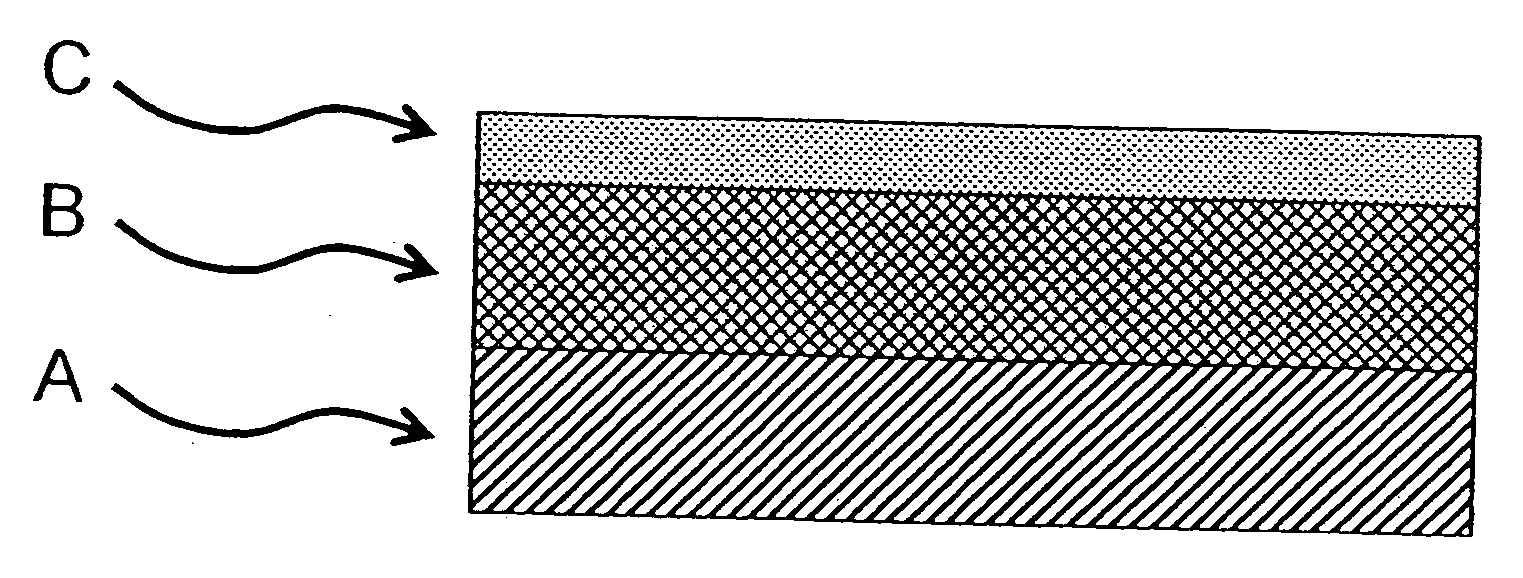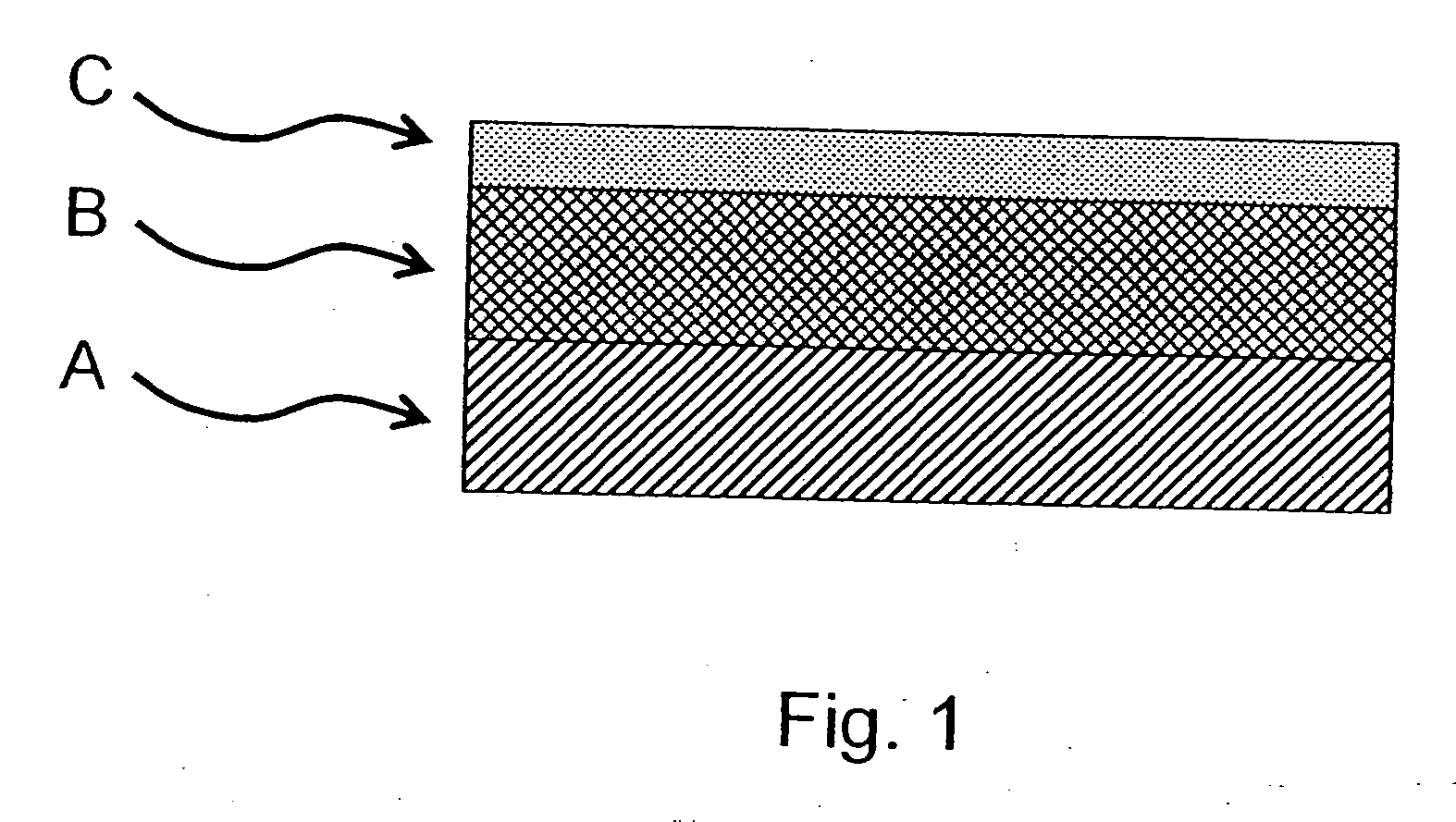Process for producing versatile plastic products having a preferentially abrasion-resistant surface
a technology of abrasion-resistant surface and abrasion-resistant plastics, which is applied in the direction of pretreatment surfaces, coatings, lamination ancillary operations, etc., can solve the problems of varnish surface structure, not always possible, certain applications, etc., and achieve outstanding surface quality.
- Summary
- Abstract
- Description
- Claims
- Application Information
AI Technical Summary
Benefits of technology
Problems solved by technology
Method used
Image
Examples
example 1
[0100] A radiation-curable varnish formulation which as well as other ingredients included a difunctional acrylate, a trifunctional acrylate and a photoinitiator was coated by means of a 0 doctor knife (wire doctor knife with a wire diameter of 0.05 mm from RK Print Coat Instruments) onto a single-sidedly self-adhesive polyester sheet 50 μm thick, and this coating was covered with an inventively selected 50 μm polyester sheet by lamination using a rubber roller. The polyester sheet used for covering had a test E transparency at 400 nm of 86% and a test D surface roughness on the side pointing towards the varnish of 0.025 μm. The haze value of the sheet was 0.38%. The composite was subsequently cured through the cover sheet with UV radiation (dose=25 mJ / cm2 UV-C; Hg lamp, undoped, Eltosch). The cover sheet was subsequently removed without destruction or residue. The varnish layer showed no traces of coating evident to the eye, was fully cured, and had a test A weight per unit area of...
PUM
| Property | Measurement | Unit |
|---|---|---|
| surface roughness | aaaaa | aaaaa |
| width | aaaaa | aaaaa |
| thickness | aaaaa | aaaaa |
Abstract
Description
Claims
Application Information
 Login to View More
Login to View More - R&D
- Intellectual Property
- Life Sciences
- Materials
- Tech Scout
- Unparalleled Data Quality
- Higher Quality Content
- 60% Fewer Hallucinations
Browse by: Latest US Patents, China's latest patents, Technical Efficacy Thesaurus, Application Domain, Technology Topic, Popular Technical Reports.
© 2025 PatSnap. All rights reserved.Legal|Privacy policy|Modern Slavery Act Transparency Statement|Sitemap|About US| Contact US: help@patsnap.com


